Diapers, Milk, And Other Baby Necessities In Japan: A Basic Guide

Diapers and milk become daily necessities when you have a baby. In this article, we introduce the different types of diapers available (disposable, cloth, tape-type, and underwear-type), how to prepare baby formula, and where to buy baby goods in Japan.
Shopping for Diapers and Milk - Where to Get the Daily Necessities for Baby
When you start your life as a parent, diapers and milk become daily necessities.
With diapers, we want to make sure the baby feels comfortable wearing them, but at the same time, we want to save on costs as much as possible. Milk, however, is directly connected to the baby's growth, so mothers need to make wise choices in this area.
In this article, we introduce the best places to buy diapers and milk in Japan, and also how they are best used.
Where to Buy Diapers and Milk in Japan?
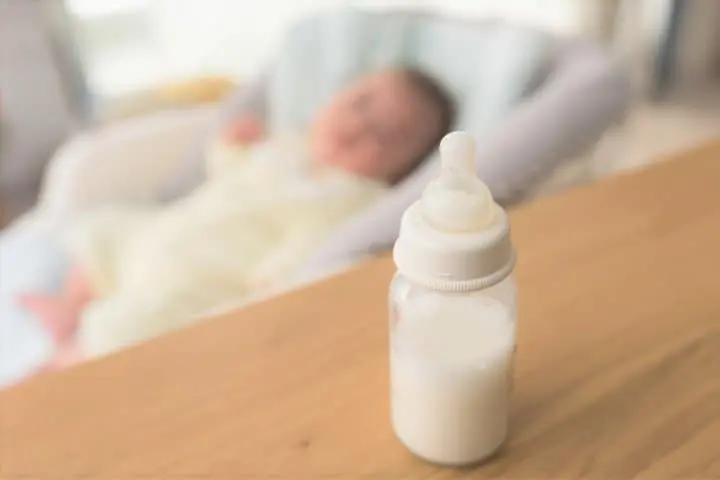
Diapers and milk can be purchased at baby goods chain stores (Akachan Honpo, Nishimatsuya, Babies 'R Us, etc.), drugstores, and mass retailers such as Don Quijote.
Prices vary depending on the diaper maker and the shop. As a general rule, however, one bag of diapers (containing 50-70 pieces) costs about 1,000 yen. Prices for powdered milk formula vary according to their type.
If you prefer shopping online, consider using Akachan Honpo (Japanese).
If you register with Amazon Family (Japanese), you can buy limited-edition products at sale prices. Also, Amazon Prime members get diapers and baby wipes at 15% off.
Over at Rakuten's Mama's Life (Japanese), you're eligible to receive special monthly discount coupons.
Shop for baby goods online: Combi (Japanese), Akachan Honpo (Japanese)
Various Types of Diapers
The diapers' shape, absorbency, breathability, and touch to the skin, can all differ depending on the maker.
If a diaper doesn't suit a baby's particular skin type, the baby can develop a rash. Also, if the diaper's shape doesn't fit the baby properly, there can be leakage from the diaper. So it's best to try a few out and find the one that's ideal for your baby.
Disposable Diapers vs. Cloth Diapers in Japan

Paper diapers are disposable, making for trouble-free cleanup. Each maker offers a full lineup of different diapers. So, choose one that prevents leakage and is most comfortable for your baby to move around in.
Sizes start with S (small), M (medium), and L (large) for newborn babies. As they gradually grow up, you can change to a larger size.
The diapers have a vertical yellow-colored line running down the middle of the diaper. When the diaper gets wet, the color changes to blue, letting you know that it's time for a diaper change.
On the other hand, cloth diapers can be washed and reused, so they are more economical. However, using them involves more work and effort, so in Japan paper diapers are most common.
Tape-Type and Underwear-Type Diapers
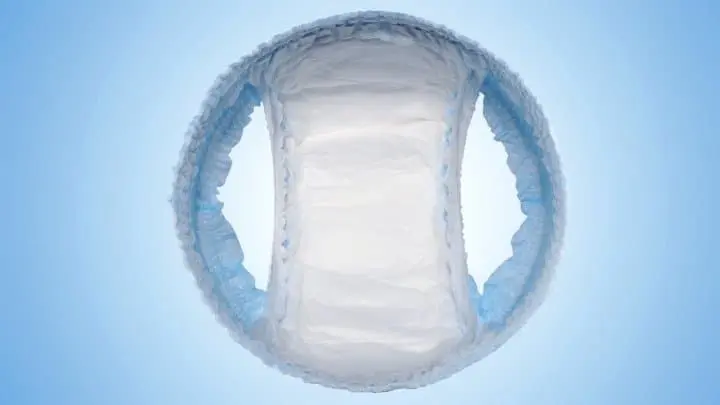
Disposable diapers come in two different types. The tape-type comes equipped with adhesive fasteners on either side, letting you adjust the diaper's size. There is also an underwear-type diaper.
Tape-type diapers can be changed while your baby is asleep, so they are ideal for newborn infants.
The switch from tape-type to underwear-type diapers commonly occurs when they are about six to seven months old, and can roll over by themselves. When the baby starts moving their legs, can turn over, sit up, and crawl around, it's time to make the transition.
Also, when the diaper doesn't just get wet but also starts leaking, and when the baby fusses when you try to change them while they're asleep, this is the right time to switch to the underwear-type diapers.
But rather than suddenly switching over, we recommend using underwear-types during the day when the baby is active. Then at night when they are sleeping, continue using the tape-type.
How to Put Diapers on a Baby
Diapers can differ slightly in how they are used. Below is a basic guide to putting a diaper on a baby.
Tape-Type Diapers
Picture courtesy of Kao Corporation (Merries)
1. Place the clean diaper under the baby, then open up the dirty diaper.
2. Gently clean the baby's bottom, making sure to wipe from the front to the back.
3. Gently lift up the baby by holding their ankles and pull out the dirty diaper. If you grab and pull up the baby too strongly, there's a possibility of actually dislocating their hip joint, so please be extra careful.
4. Raise the inner gathers and pull up the new diaper so that it's located at the baby's navel area. Ensure that the diaper is positioned evenly, then fasten both sides with the adhesive tabs. If you can insert two fingers between the diaper and the baby's tummy, your baby can breathe freely and move around.
If the remains of a newborn infant's umbilical cord still haven't dried out, be sure not to put pressure on the navel area. Instead, protect this area by placing a small piece of gauze over it.
6. Make sure the gathers around both legs are sticking outwards, and the diaper fits snugly to help prevent leakage.
Finally, in order to minimize odors, put the dirty diaper into a plastic garbage bag before disposing.
How to Put On Underwear-Type Diapers
Picture courtesy of Kao Corporation (Merries)
1. Position the clean diaper under the baby so it's the right way around.
2. Remove the soiled diaper. You can either pull down the diaper or tear at the sides of the diaper for easy removal.
3. Gently wipe the baby's bottom from the front to the back.
4. While the baby is in the sleeping position, pass each leg through the clean diaper, and pull up so that the diaper's waist sits at the baby's stomach area.
6. Pull the gathers so they stick outwards and adjust them so that they fit snugly around both legs.
Just as we did with the tape-type diapers, place the soiled underwear-type diapers in a plastic bag before disposing of them.
Various Types of Milk
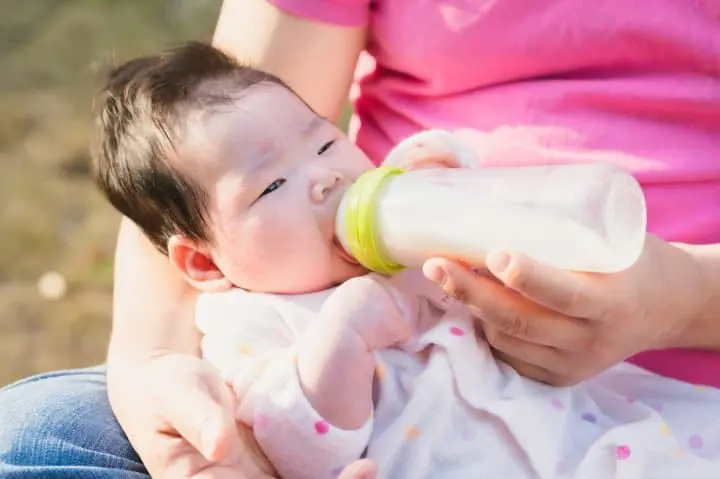
Powdered milk and concentrated liquid milk are convenient alternatives when breastfeeding isn't an option. This takes some of the burden off mothers, and also allows fathers to get involved in the feeding process.
Next, we show you how to prepare a powdered milk formula, and also introduce some brands of liquid milk that are currently on the market.
What is Powdered Milk Formula?
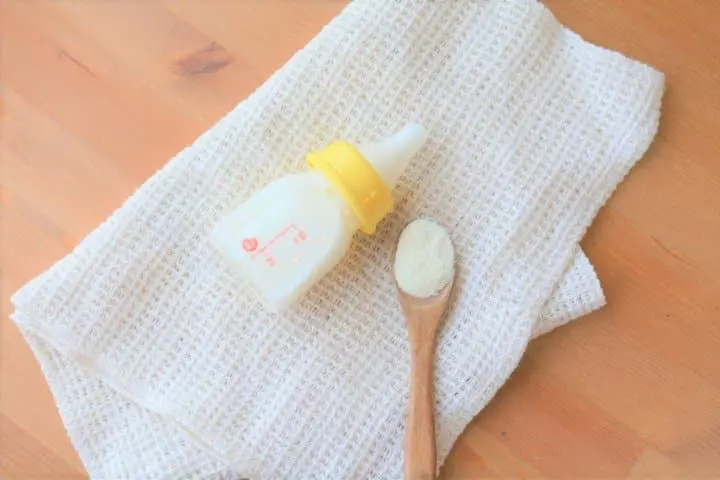
Powdered milk formula comes in a can, as a stick-type individual packet, and also in cubes.
The canned formula is cost-efficient and suitable for use at home. The stick-type and cube-type are handy when going on an outing or when breastfeeding isn't possible.
Powdered milk can be used as infant formula, as a formula for babies with allergies, and also as "follow-up milk", which helps an infant make the transition from baby formula to regular cow's milk.
Though regular infant formula is not usually a problem, some babies have allergies to cow's milk. So there's also a special formula made from soybean protein. "Follow-up milk" serves as a dietary supplement when the baby is transitioning to solid foods.
Ingredient volumes in domestic milk formulas are determined by the Japanese Ministry of Health, Labor and Welfare. As a result, there aren't big differences in products made by different companies. However, there can be subtle differences in price and taste, so it's a good idea first to try out several products and see how your baby likes them.
How to Prepare Milk Formula
Picture courtesy of MAMADAYS
For starters, please have the following items on hand.
- powdered milk formula
- a baby bottle
- a nipple for the bottle
- a baby bottle cover
- a pot or cooking pan
- tap water (Japanese powdered milk formula was designed using active ingredients that combine well with domestic drinking water when preparing baby milk).
Next, prepare the milk according to the following steps.
1. First, wash your hands thoroughly with soap. Next, sterilize the baby bottle and nipple. When sterilizing with boiling water, be sure to completely submerge all the bottle parts in the water for five to ten minutes (three minutes for the bottle's nipple).
2. Use a spoon to measure out the powder properly and then put it inside the bottle. If you put the powder in the bottle without carefully measuring it, the resulting formula can be too weak or too strong. This can be dangerous for the baby. Be sure to adjust the powder amount according to your baby's specific needs.
3. Pour two-thirds of the prescribed hot water into the bottle. The boiling tap water will be cooled down until it reaches about 21°C, at which point it will be ready for use.
4. Attach the nipple and cover the bottle. Wrap the bottle in a clean towel to prevent scalding. Then, dissolve the powdered formula by gently shaking the bottle around in a circular fashion.
5. Re-open the bottle and pour in the final amount of the prescribed hot water. Then place the bottle in a bowl of cold water (or hold it under cold running water) until it cools down to body temperature.
6. Place a few drops of milk on your forearm or wrist to check its temperature. If it's still too hot, it can scald the baby so please be careful.
7. Finally, it's feeding time! Please make sure the nipple of the bottle is firmly in the baby's mouth. After feeding, burp your baby by gently stroking their back.
When preparing the powdered formula, prepare just enough for each feeding time. Please do not feed your baby any milk that's left over from before.
Concentrated Liquid Milk in Japan
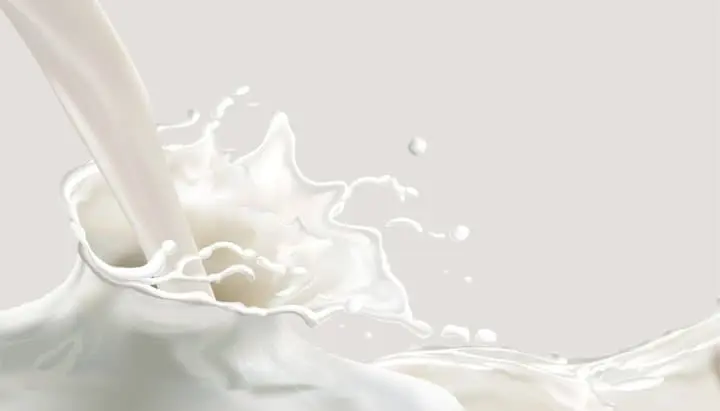
Concentrated liquid milk has been on Japanese shelves since 2019. Though slightly more expensive, it can be used at room temperature, making it convenient when on an outing or in times of a disaster.
Liquid milk comes in either a steel can or paper carton. With a steel can, the content won't deteriorate and is protected from outside impacts.
Paper cartons are easy to carry around with you. In other words, each kind has its unique advantages.
Liquid milk will keep for one year from its production date. You can put the milk into a bottle and use it as usual, and there's also a special nipple available.
Feel Free to Consult Your Local Municipality
You might be wondering which kind of diapers and baby formula is best for your baby.
If you're concerned about this, don't hesitate to consult a nurse or parenting support network in your local municipality, or visit a nearby hospital or maternity hospital for information about mother's milk. You can go to them to receive advice on other issues as well.
Shop for baby products here: Combi (Japanese), Akachan Honpo (Japanese).
Shop for popular Amazon products here: Diapers from Merries (Underwear Type, L Size) and Wakodo Hai Hai Powdered Milk Formula
Read also
All images (except the credited ones) and the main image are from Pixta
This is the official account of MATCHA's editorial department. Our articles feature useful travel information for visitors to Japan, from how-to guides to recommended places to visit.






































![[2026] Top 5 Strawberry Picking Spots in Tokushima, Naruto| Farms and Access Guide for January to May](https://resources.matcha-jp.com/resize/720x2000/2025/03/06-227165.webp)



